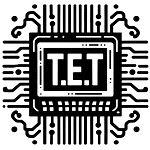This page has tutorials for LTSpice, KiCad and QUCS
In the realm of electronic design and simulation, engineers and hobbyists are presented with a myriad of software tools to choose from. Among these, LTspice, QUCS (Quite Universal Circuit Simulator), and KiCad stand out as powerful options, each offering unique features and capabilities. In this article, we’ll delve into what can be achieved with these tools, their applications, and the benefits they offer over one another.
LTspice
LTspice, developed by Linear Technology Corporation (now part of Analog Devices), is a high-performance SPICE simulation software widely used for analyzing and simulating analog and mixed-signal circuits. It offers a user-friendly interface coupled with robust simulation capabilities.
Applications:
1. Analog Circuit Simulation: LTspice excels in simulating analog circuits such as amplifiers, filters, and voltage regulators, enabling designers to analyze circuit behavior, verify design specifications, and troubleshoot issues before physical prototyping.
2. Switching Regulator Design: With its support for switching regulator models, LTspice facilitates the design and optimization of DC-DC converters, ensuring efficiency and performance.
3. Transient Analysis: Engineers can perform transient analysis to simulate circuit response over time, crucial for understanding dynamic behaviors and transient phenomena in electronic circuits.
4. Monte Carlo Analysis: LTspice enables Monte Carlo simulations for assessing circuit performance under component variations, providing insights into design robustness and reliability.
Benefits:
– Rich Component Library: LTspice offers an extensive library of components, including models for various semiconductor devices, passive components, and behavioral models, streamlining the design process.
– Fast Simulation Engine: It boasts a fast and efficient simulation engine, allowing for quick iteration and analysis of circuit designs.
– Customization: Users can create custom models and subcircuits, enhancing the versatility of the tool for specialized applications.
– Integration with LT Components: Integration with Linear Technology components facilitates seamless design and simulation of circuits using LT’s products.
QUCS (Quite Universal Circuit Simulator)
QUCS is an open-source circuit simulation software that provides a flexible and comprehensive platform for simulating both analog and digital circuits. It offers a modular architecture and supports various simulation techniques, making it suitable for a wide range of applications.
Applications:
1. Analog and Digital Circuit Simulation: QUCS supports the simulation of analog, digital, and mixed-signal circuits, making it versatile for diverse electronic design projects.
2. RF and Microwave Circuit Design: With its capability to simulate high-frequency circuits, QUCS is well-suited for RF and microwave circuit design, including amplifiers, filters, and oscillators.
3. S-parameter Analysis: Engineers can perform S-parameter analysis to characterize the behavior of linear passive and active components, essential for RF and microwave circuit design.
4. Parameter Sweeps: QUCS allows users to perform parameter sweeps to study the effects of component variations on circuit performance, aiding in design optimization and sensitivity analysis.
Benefits:
– Open-Source: Being open-source, QUCS offers accessibility to its source code, allowing users to customize and extend its functionality as needed.
– Modular Architecture: Its modular architecture enables users to integrate custom models and simulation modules, enhancing flexibility and scalability.
– Cross-Platform Compatibility: QUCS is available for multiple platforms, including Windows, macOS, and Linux, ensuring broad accessibility for users.
– Community Support: A vibrant community contributes to the development and support of QUCS, providing resources, tutorials, and user forums for assistance.
KiCad
KiCad is an open-source electronic design automation (EDA) suite that encompasses schematic capture, PCB layout, and 3D visualization tools. It offers a comprehensive solution for designing and prototyping electronic circuits and systems.
Applications:
1. Schematic Capture: KiCad provides a user-friendly schematic capture tool for designing electronic circuits, facilitating the creation and documentation of circuit diagrams.
2. PCB Layout: Its PCB layout editor allows users to design printed circuit boards (PCBs) with precision, incorporating components, routing traces, and defining board outlines.
3. Footprint Editor: KiCad includes a footprint editor for creating and modifying component footprints, essential for ensuring compatibility and accuracy in PCB design.
4. 3D Visualization: With built-in 3D visualization capabilities, KiCad enables users to visualize and inspect PCB designs in a three-dimensional environment, aiding in design validation and verification.
Benefits:
– Integrated Workflow: KiCad offers an integrated workflow from schematic capture to PCB layout, ensuring seamless design continuity and data consistency.
– Cross-Platform Compatibility: It is available for multiple platforms, including Windows, macOS, and Linux, ensuring compatibility with a wide range of systems.
– Community Libraries: KiCad benefits from a vast library of community-contributed components and footprints, reducing design time and effort.
– Open-Source: Being open-source, KiCad provides accessibility to its source code, allowing users to customize and extend its features as needed.
Choosing the Right Tool
While LTspice, QUCS, and KiCad serve overlapping purposes in electronic design and simulation, each tool offers distinct features and strengths. The choice of tool depends on the specific requirements of the project, the user’s preferences, and the desired level of functionality and customization.
– LTspice excels in analog circuit simulation and transient analysis, offering a user-friendly interface and robust simulation capabilities, particularly for designs involving Linear Technology components.
– QUCS provides flexibility and versatility, supporting analog, digital, and RF/microwave circuit simulation, with an open-source and modular architecture that allows for customization and extension.
– KiCad offers a comprehensive EDA suite for schematic capture, PCB layout, and 3D visualization, with an integrated workflow and extensive community support.
Ultimately, engineers and designers can leverage these tools based on their specific project requirements, leveraging their respective strengths to streamline the design and simulation process and bring innovative electronic systems to life.
